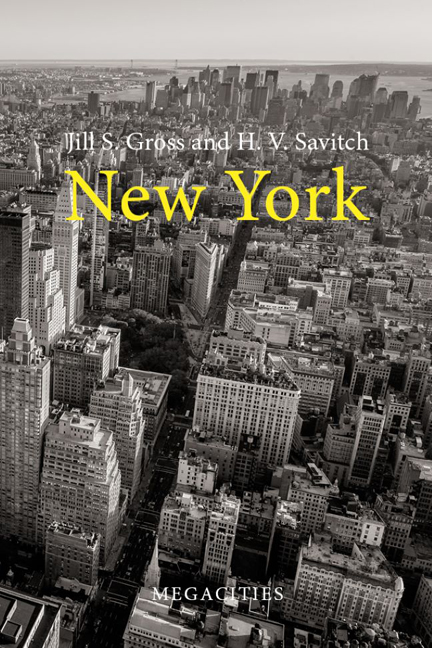Book contents
- Frontmatter
- Contents
- Preface and acknowledgements
- 1 Introduction: New York as a megacity
- 2 Crises, breakdowns and New York’s endurance
- 3 Building a global megacity: corporate- centred urban development and leadership
- 4 Expanded governance in the megacity
- 5 Neighbourhoods, diversification and gentrification in the megacity
- 6 Globalization in the megacity
- 7 Conclusions
- References
- Index
4 - Expanded governance in the megacity
Published online by Cambridge University Press: 20 January 2024
- Frontmatter
- Contents
- Preface and acknowledgements
- 1 Introduction: New York as a megacity
- 2 Crises, breakdowns and New York’s endurance
- 3 Building a global megacity: corporate- centred urban development and leadership
- 4 Expanded governance in the megacity
- 5 Neighbourhoods, diversification and gentrification in the megacity
- 6 Globalization in the megacity
- 7 Conclusions
- References
- Index
Summary
Governance across New York is perhaps one of the most counterintuitive features of the region. Given the size of its economy, the vast range of services that must be performed on a daily basis, the scope of its transportation networks and the sheer numbers of people and goods that circulate through the megacity (not only locally but nationally and globally), one would expect that, beneath this living breathing behemoth, there would be a unified, well-organized and coherent governmental system. One would imagine a clear set of institutions in place that would oversee, manage, plan and coordinate these activities. One would anticipate a political system characterized by collaborative leaders, working collectively to adapt to the tensions inherent in growth, and a political system that would serve to keep things moving. One would expect an institutional ensemble that was poised to face the challenges wrought by climate change, terrorism, global economic shocks and health crises. But, in fact, when we turn our gaze to the administrative and political scaffolding that supports the megacity, what we find is something quite unexpected.
This highly productive region appears to operate in the absence of a unified or coordinated structure of governance. Regional institutions operating both across the entire region and within each state coexist alongside a plethora of more localized county and municipal governments, special districts and neighbourhood- level institutions. Governance in the region is so very complex that it does at times seem almost miraculous that the megacity is able to cohere around critical needs, and yet it does.
The megacity contains, literally, thousands of entities, some formally defined in law (de jure) and others informally emerging (de facto). The historic evolution of governance in this dynamic region mirrors the patterns discussed in Chapter 3. Governance has been shaped by ongoing competition between localities to capture a larger share of economic growth, popular pressures over equitable representation and administrative pressures to cut costs and increase efficiency in the delivery of services. It is not simply economic competition that has driven processes of expanded governance, but, as discussed in Chapter 2, necessity has also served as a driver during moments of crisis (environmental, economic, health).
- Type
- Chapter
- Information
- New York , pp. 83 - 108Publisher: Agenda PublishingPrint publication year: 2023

